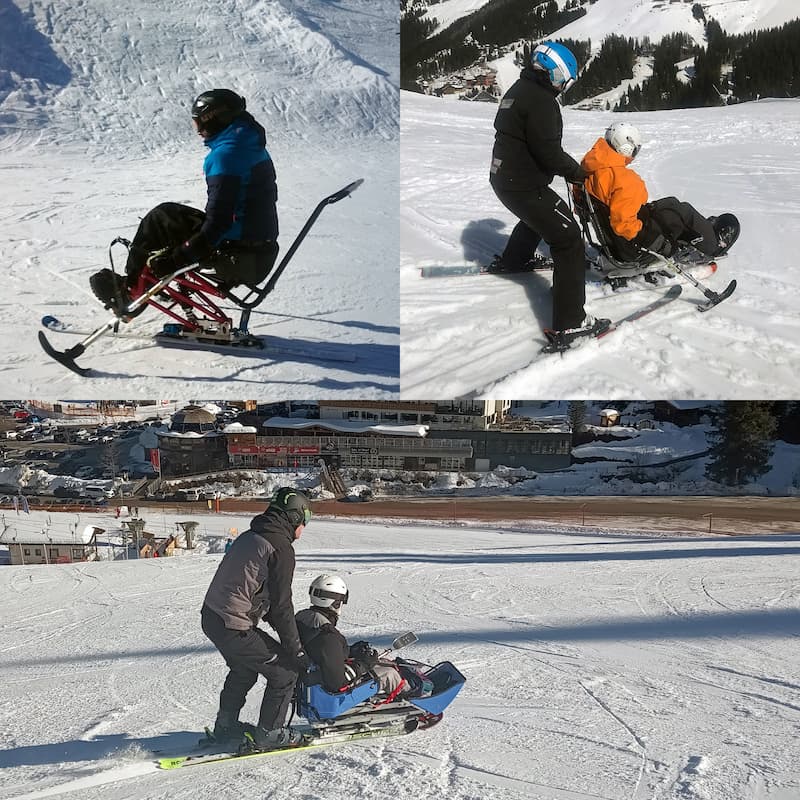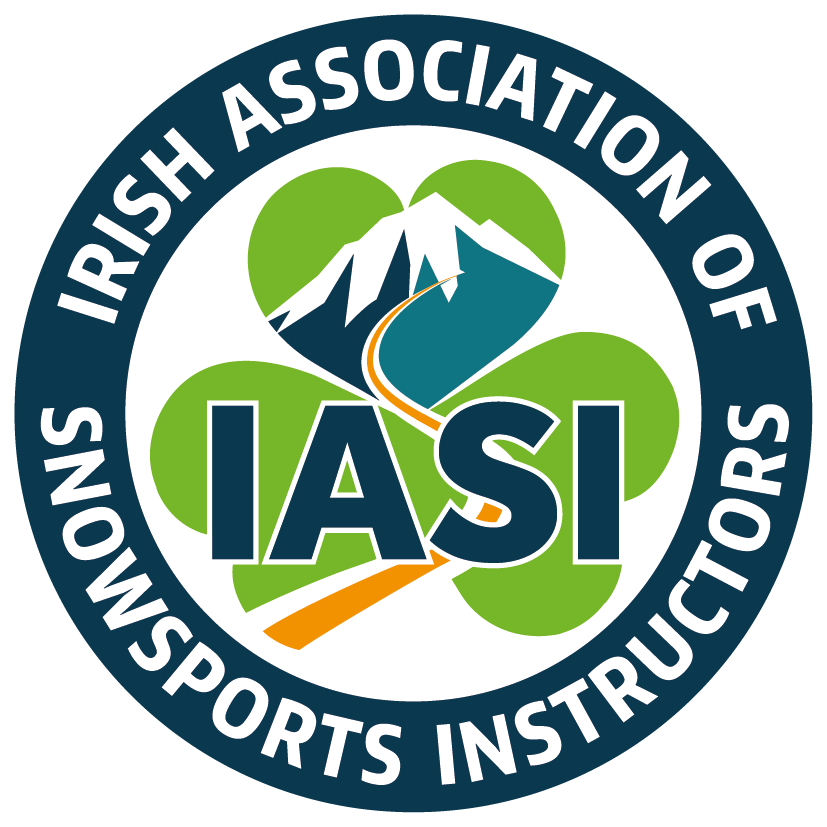IASI Snowsports
A Day in the Life - Sara Jones
Sara Jones is IASI’s head of Adaptive Education – she works in Hochfugen, Austria.
I arrive at work around 08:15 and open up the ski hire shop. Alongside serving ski hire customers I’ll be checking with the instructors as they arrive that they know where they need to be at what time. I’ll also check if there are any changes to the schedule and alter the planning if necessary.
The first lessons start at 9, so the first 45 mins. of the day can be pretty busy.
If I’m also teaching at 9 I need to get myself ready too. Depending on the lesson that could include checking the avalanche report and sorting out safety equipment for a freeride session. Or, sorting out everything I need for an adaptive lesson.
Once I’m out on the snow with a guest I can focus on exactly what that person needs.
At lunchtime I’ll be back at the shop. I’ll check that the instructors have had a good morning as well as making sure they know what they’re doing in the afternoon. If there were any email enquiries or questions from our main booking office I’ll deal with them before having a quick lunch, ready to be on the snow again at 1.
After the afternoon lessons are finished I’ll do the same again before closing the shop and going home around 16:30.
The life of an adaptive instructor in Austria is varied and interesting. Some recent highlights include:
- a lady with MS who simply wanted to experience being in the mountains. She had never had the opportunity before due to her disability so we went on a sightseeing tour in a biski.
- A lady with MS who wanted to learn to ski independently, which meant also teaching her husband how to bucket and tether the biski safely
- An ex-paralympian with a visual impairment who has a guide in every ski area that he regularly visits. He makes life especially tricky because he sees more when there’s less contrast, so he prefers to ski in flat light and fog.
- A lady who only told me that she’d had a stroke halfway through the lesson after I noticed that she appeared to have one side weaker than the other.
- A guy who had had a spinal injury whilst ski mountaineering somewhere around Chamonix. His goal was to be able to freeride again but in a monoski.
- A boy on the autistic spectrum who learnt to ski on a dry slope. He preferred going straight, without turns, because at the dry slope there was a net at the bottom that caught him.

My first guest arrives for her lesson.
Claudia contacted us in the summer asking about sitskiing in Hochfügen.
She had already had a few lessons in an indoor ski slope in the Netherlands and wanted to know if she could rent equipment and have lessons in Hochfügen. We don’t have the specific sitski that she wanted to ski but I suggested where she could rent one. After a discussion of pros and cons of the different skis she decided to use ours for this trip.
Before she arrived for her lesson I checked that I had everything I needed for the biski, including outriggers, padding and the quick release so that we could use the surface lifts.
Claudia had also asked if her husband, Remco, could learn how to accompany her when she’s skiing in a sitski. However, before I started focussing on what her husband needed to do I wanted to see how she skied.
I decided to go up in the gondola and use the blue and red piste there to figure out what Claudia needed before going to the beginner slope where Remco could learn to bucket and tether the biski.
Using the gondola was straighforward as Claudia could walk into it and Remco helped me carry the equipment.
As we went up in the lift we chatted about what Claudia had learned in the indoor slope. It sounded like she had some of the basics but she asked if we could start from the beginning anyway as she wasn’t sure if skiing in the mountain environment would be different.
Remco was immediately put to work steadying the ski while Claudia strapped herself into it. I briefly explained how the ski worked and then bucketed a few turns while talking through what was happening so that Claudia could connect the theory with the feeling. Before we set off I also explained to Remco how bucketing worked and suggested that he watch us so that he would have more idea of what he would need to do later.
Claudia has Multiple Sclerosis.
She lacks strength in her legs and balance when she’s walking. However, she has a relatively strong upper body so it wasn’t long before we decided for her to try skiing with the outriggers and tethers. Again, I explained to Remco what tethering should look like and asked him to watch.
Basically a biski works by tilting and carving. As a beginner biskier it is sometimes difficult to feel how much to tilt the skis – too much and you fall over, not enough and the turns are too open and fast!
Claudia did well, although at times I had to „catch“ her with the tethers before she fell over, and at others I had to slow her down.
The morning was spent helping them both to use the sitski effectively.
We skied down towards the beginner area so that Remco could take over. I reminded Remco of what he needed to do and then we swapped places. It was clear that he had been paying attention as his position was correct however, he made the very common mistake of being afraid to tilt the ski enough and using his strength to muscle the ski around instead. After a bit of practice he improved although he realised that he was being hampered by his own aggressive slalom skis.
We decided that he should rent a softer, shorter, all round ski and then try again the next day.
By this time Claudia was getting tired. Her turns to her weaker side were either all or nothing, so we decided to call it a day and I bucketed her back to the bottom.
It is important to know with guests exactly when to call it a day, so we have to have to be aware of their skiing as well as their state of mind. We can choose to stop for a coffee break and sometimes this helps them to refresh their mind as well as restore some strength.
After my lessons I am back to the shop where I check up on any new lessons needed for tomorrow and debrief my team on the day.

Latest Posts
- Race training and the instructor journey
- The Off-Season Advantage
- Free the Heel!
- Rich Egan – A Day in the Life
- Introducing Michael Edwards – Head of Education
- IASI delivering Freestyle Coach Level 1
- A Day in the Life – Ali Smith
- IASI and Interski Information
- Important Note from the ISIA Board
- A Day in the Life – Sara Jones
